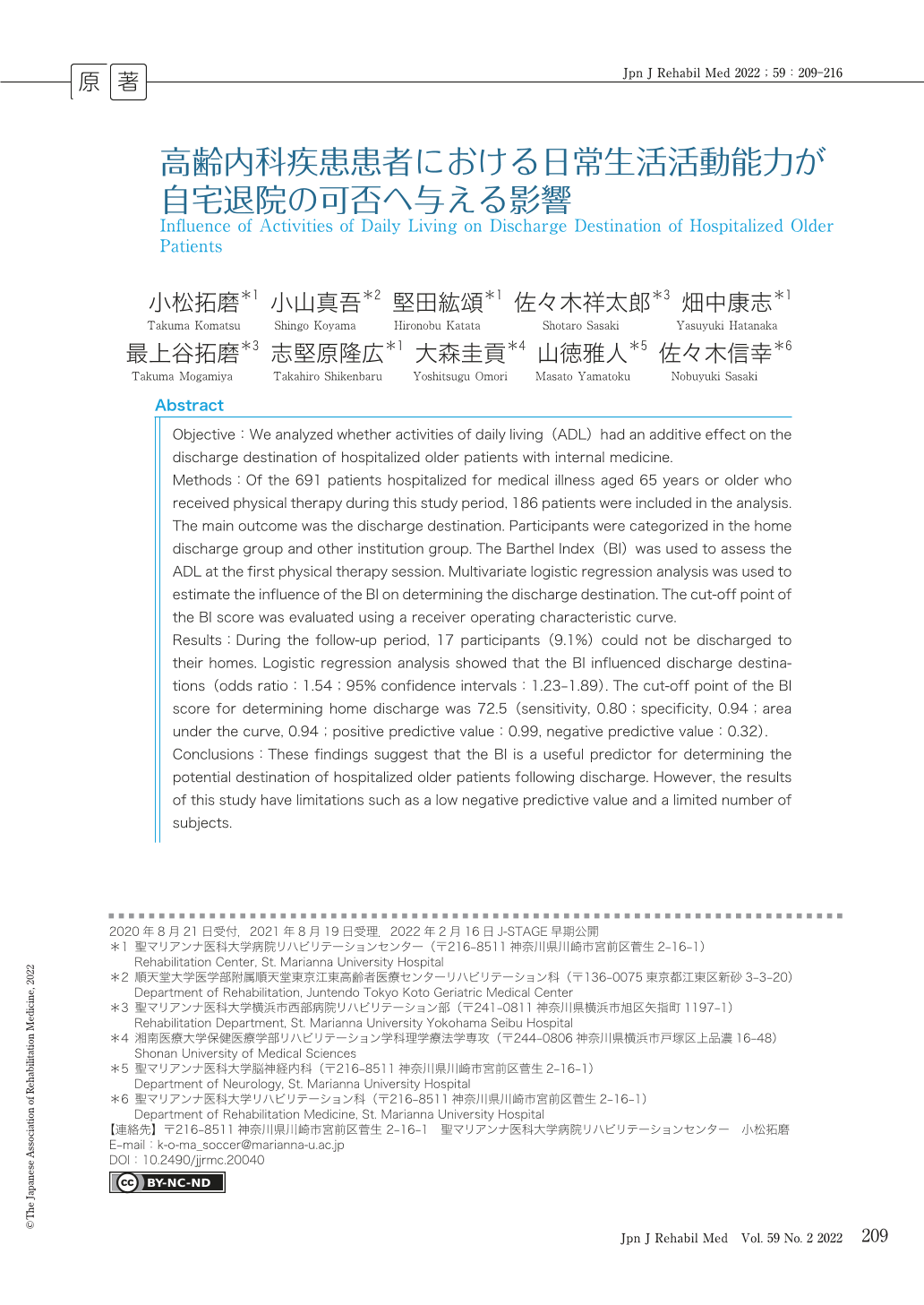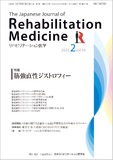Japanese
English
- 販売していません
- Abstract 文献概要
- 1ページ目 Look Inside
- 参考文献 Reference
要旨
目的:本研究の目的は高齢内科患者における理学療法開始時の日常生活活動能力が自宅退院に影響を与える因子を明らかにすることである.
方法:解析対象者は研究期間内に理学療法の依頼があった65歳以上の内科疾患患者691名のうち,除外基準を満たさない186名であった.調査項目は転帰先,理学療法開始時のBarthel Index(BI)とした.統計解析はロジスティック回帰分析から自宅退院の可否とBIの関連性を検討し,ROC曲線よりBIのカットオフ値を算出した.
結果:対象者(年齢77.3±6.9歳)は自宅群169例,転院群17例であった.ロジスティック回帰分析の結果,理学療法開始時BIは自宅退院に影響を与える因子であり(OR:1.54,95%信頼区間:1.23〜1.89),自宅退院を予測するためのカットオフ値は72.5点(感度0.80,特異度0.94,陽性的中率0.99,陰性的中率0.32)であった.
結論:高齢内科患者における理学療法開始時BIは自宅退院に影響を与える因子であり,これらの結果は退院支援の必要性を判断する一助となる可能性がある.しかし,本研究で得られた結果は陰性的中率が低く,適応対象が限定されるため一般化には注意を要する.
Objective:We analyzed whether activities of daily living (ADL) had an additive effect on the discharge destination of hospitalized older patients with internal medicine.
Methods:Of the 691 patients hospitalized for medical illness aged 65 years or older who received physical therapy during this study period, 186 patients were included in the analysis. The main outcome was the discharge destination. Participants were categorized in the home discharge group and other institution group. The Barthel Index (BI) was used to assess the ADL at the first physical therapy session. Multivariate logistic regression analysis was used to estimate the influence of the BI on determining the discharge destination. The cut-off point of the BI score was evaluated using a receiver operating characteristic curve.
Results:During the follow-up period, 17 participants (9.1%) could not be discharged to their homes. Logistic regression analysis showed that the BI influenced discharge destinations (odds ratio:1.54;95% confidence intervals:1.23-1.89). The cut-off point of the BI score for determining home discharge was 72.5 (sensitivity, 0.80;specificity, 0.94;area under the curve, 0.94;positive predictive value:0.99, negative predictive value:0.32).
Conclusions:These findings suggest that the BI is a useful predictor for determining the potential destination of hospitalized older patients following discharge. However, the results of this study have limitations such as a low negative predictive value and a limited number of subjects.

Copyright © 2022, The Japanese Association of Rehabilitation Medicine. All rights reserved.


